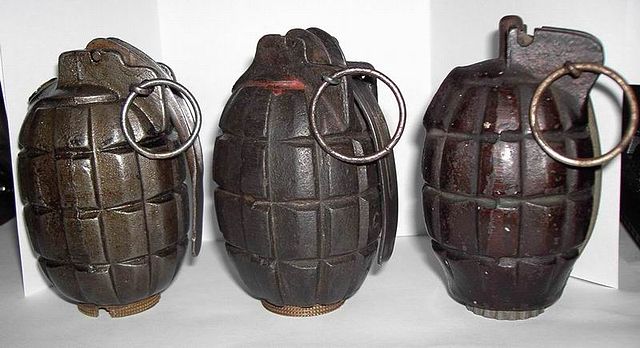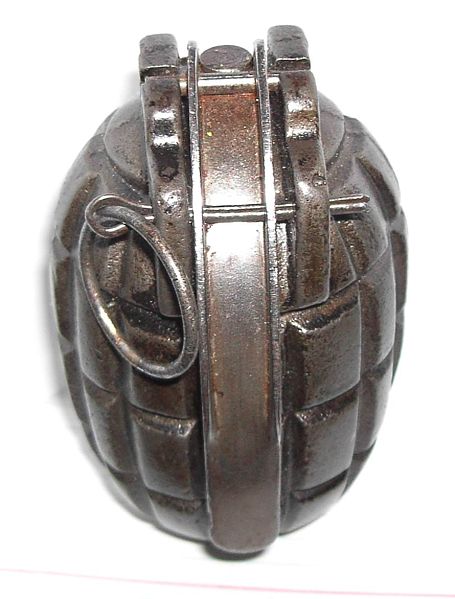"Mills bomb" is the popular name for a series of British hand grenades which were designed by William Mills. They were the first modern fragmentation grenades used by the British Army and saw widespread use in the First and Second World Wars.
Mills bombs. From left to right : No. 5, No. 23, No. 36
An officer of the British Salonika Army demonstrates how to "lob" a Mills bomb during the First World War
No. 5 Mk II Mills bomb
Cutaway view of a No. 5 Mills bomb
A grenade is an explosive weapon typically thrown by hand, but can also refer to a shell shot from the muzzle of a rifle or a grenade launcher. A modern hand grenade generally consists of an explosive charge ("filler"), a detonator mechanism, an internal striker to trigger the detonator, an arming safety secured by a transport safety. The user removes the transport safety before throwing, and once the grenade leaves the hand the arming safety gets released, allowing the striker to trigger a primer that ignites a fuze, which burns down to the detonator and explodes the main charge.
Replica WW2 Hand grenades on display
Hand grenades filled with Greek fire; surrounded by caltrops (10th–12th centuries National Historical Museum, Athens, Greece)
Mongolian grenade attack on Japanese during Yuan dynasty
Seven ceramic hand grenades of the 17th Century found in Ingolstadt Germany








